The Forbidden Room, reviewed here yesterday, brings to a climax Guy Maddin’s thirty-year orchestration of the ghosts of world cinema past. A movie like no other, it’s a hectic, twilit construction and deconstruction of What Might Have Been: a pullulating assemblage of vintage movies that were either lost or never made reinvented by the Canadian filmmaker and his co-writers Evan Johnson and Robert Kotyk. And we’ve seen nothing yet: Maddin and Johnson, who co-directed the film, are reconfiguring it with other story strands for their Internet extravaganza Séances, which they’ll launch in 2016.
Maddin, serious and larky, and the digital wiz Johnson, happy to take a back seat, sat down with The Arts Desk in late September when they were visiting Manhattan to present The Forbidden Room at the New York Film Festival. They explained how it grew out of the live mini-movies they shot before audiences for Séances (aka Spiritismes), primarily in Paris’s Pompidou Center (February-March 2012) and Montreal’s Centre Phi (July 2013).
Did you always intend to pull a feature film out of Séances?
Guy Maddin: While we were shooting the Internet version, financing issues came up – it's difficult to get new media funding at budget levels. But by promising to make a feature version, we were able to achieve our budget level for the original project. We found out halfway through the shoot that we had to make a movie, and then wrote the rest with an idea of how we could sew it all together.
What was the original idea behind Séances?
GM: We thought of ourselves, the filmmakers, as the mediums – who are charlatans – through which the spirits of these sad films doomed to unhappily wander the landscape of film history, unable to project themselves, would be given an opportunity to be seen by the human eye in a séance. The paranormal séance is like the filmic séance – the experience of going to see films in Paris, where the word “séance” means a seating in the dark to see something that isn’t really there and which the people gathered there want to believe in. So they’re really the same thing. In each, the medium is given the chance to enchant people, and when the lights go up they decide if they’ve been enchanted or not.
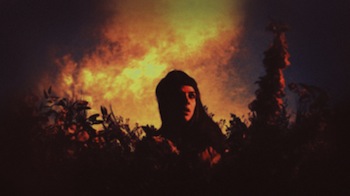 Was there any one lost film that started you thinking about this?
Was there any one lost film that started you thinking about this?
GM: I don’t know. I started secretly to steal the synopses of lost movies for some of my short commissions, even back in the nineties. My way of seeing them was just to make them myself. Then we decided to make a big project involving all these rich and strange narratives. My favorite one – we haven’t made it yet, someone else can – is The Greatest Thing in Life [1918], which D.W. Griffith made to try to atone in his clumsy way for his portrayal of the Ku Klux Klan in The Birth of a Nation [1915]. It’s about a white racist man fighting alongside African-American soldiers in the trenches of the Great War. One African American is mortally wounded and hallucinates in his dying moments that this white racist is his mammy from back home, and he asks for a kiss on the lips. The white racist kisses him and is transformed into a loving human who spends the rest of the film looking for other black soldiers to kiss. It shows you can get a pretty cool understanding of history by studying pop culture alongside it. For example, you can get an understanding from certain films how enthusiastically embraced eugenics once was.
Would you say that shedding light on the past is one of the underlying philosophical purposes of your films?
GM: I’ve always gotten pleasure out of putting anachronistic ideas in a modern context, just to show them in relief. I credit the viewer with having enough intelligence to know that I’m not promoting those ideas. The use of anachronistic beliefs creates a bracing contrast with current positions, because you go, “Oh, that’s the way things were.” If you watched American Pie twenty years from now, you’d have a better understanding of the late nineties.
You ended up re-creating 31 lost films in 31 days?
GM: It was 32. We shot 18 films in 18 days at the Pompidou Center, another 13 in Montreal, then the bracketing story, How to Take a Bath, written by John Ashbery, in Winnipeg. They’re not all in The Forbidden Room. Some of them are just being uploaded to Séances. We chose movies that were literally lost or movies that haunted us because they could have existed. Then we started to stretch the definition of “lost”. Some of them were repressed for political reasons. One of them, Lines of the Hand – which isn’t in The Forbidden Room – is lost in the sense that Jean Vigo planned to shoot it, but then he died, so he was lost. We shot our version as our very first séance. His daughter Luce Vigo is it, holding hands with Geraldine Chaplin.
Was shooting in front of a live audience revelatory?
GM: It was very strange. Halfway through shooting my previous feature, Keyhole, which I have mixed feelings about, I remember thinking, “I’m starting to go through the motions, and for someone who hasn’t got it made, it’s a bit early to start thinking that.” I thought shooting in public would help me maybe start thinking in terms of being a showman, right at the production stage instead of the presentation stage. We forgot that the audiences were there, of course, though the actors seemed to be affected by it. It had to be performed by actors who were up for the adventure of making mistakes before an audience, so there was a kind of natural selection there, though, in fact, no one turned us down. The real mistake they made was being in the movie [laughs].
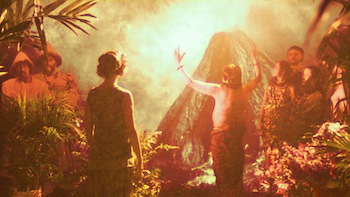 There’s a heightened acting style in your movies that would seem to suit theatre more than films anyway.
There’s a heightened acting style in your movies that would seem to suit theatre more than films anyway.
GM: Yes. You’ve got to uninhibit the truth for the people in the cheap seats in the theatre. It’s funny: people frequently ask me how I get those uninhibited performances, but actors tend to default to them in my presence. Maybe it’s the way I describe things or sometimes perform for them. Perhaps acting in public this time threw them back beneath the proscenium instead of making them think about the camera. Anyway, because the actors make that default, the only directions I give them are “Again!” and “Smaller!”, believe it or not, and it’s impossible on both counts!
Did you have stage sets, or did you add all the backgrounds digitally?
GM: In Paris we had one set that we tried to disguise as a new one every day, then we used a little bit of compositing for the second half.
EJ: Not much. A lot of it was shot with rear-screen projection.
GM: And you kind of owe it to the audience to show them that. It’s not much of a show otherwise. So we shot it beforehand. I remember Evan and our other screenwriter, Bob [Kotyk], and I went out in a paddleboat on a swamp late in the fall. We realized we needed some tropical shoreline going past for a sternwheeler melodrama we were shooting – an unrealized Erich von Stroheim movie [Poto-Poto] – but it was freezing and we were three screenwriters who’d never really paddled a boat and we were almost tipping over.
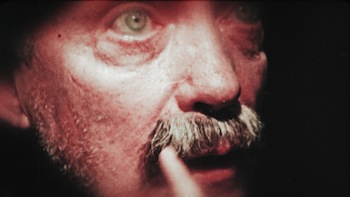 EJ: I got a blister. My thumb hurt.
EJ: I got a blister. My thumb hurt.
GM: But we were collecting rear-screen footage all the time. You know that if a great climatic condition goes by, like a blizzard or something, and you don’t get footage of it, you’ll be kicking yourself half a year later. So we were always out there trying to get things.
Evan, is there an easy way to describe how you made these digital images look distressed?
EJ: It’s not that complicated. My brother Galen and I studied the things we thought looked good, like decayed film, and then we found ways of mixing digital. It was just a matter of painstaking work.
GM: Colour palettes were huge because each story had to have a different look. Evan made it look better. The raw, naked video footage was hideous and depressing to me. [To Evan] Because I’m the layman, I like to think that you took available software and didn't use it correctly.
EJ: That was the idea. But that’s what you do in storytelling terms, too.
GM: I think it’s lovely that the very way the picture’s made available to the eye involves the same process we used when we write.
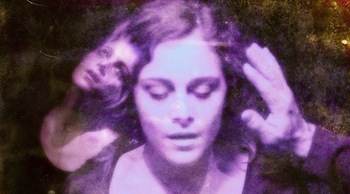 At a certain point when I was watching the film, I started to forget different stories that had gone before and only remembered them when you began un-nesting the nested narratives. It was like sharing the Margot character's amnesia.
At a certain point when I was watching the film, I started to forget different stories that had gone before and only remembered them when you began un-nesting the nested narratives. It was like sharing the Margot character's amnesia.
EJ: That isn’t entirely the effect of there being too many parts. I remember when we were giving out the script to actors, they found individual sections hard to remember, and that’s because the logic of what happens isn’t very precise.
GM: It’s waking logic, I guess.
There is a spine: Cesare the Woodsman’s quest to rescue Margot from the Red Wolves. But the atmosphere of the film and the sense it gives of dreaming is as much the subject as the plot, which is the opposite of what Hollywood filmmakers strive for.
GM: It’s probably the only way it could have been, but I’m pleased that’s how it turned out.
EJ: Mood and atmosphere is what we actually applied the structure to. We tried to provide a conventional Hollywood three-act structure based on screenwriting parameters, but that was applied not to plot but to mood shifts. The rhythms of hope and despair you find in a three-act structure, where the protagonist has a mission and rising hope and then hits a low point…we attempted all that.
GM: But we did it with mood.
EJ: And each plot unit tended to resolve itself.
The film is bursting with psychosexual anxiety, as most of your films are. Is that something you analyse, or does it come out anyway?
GM: It just seems to be the only subject.
EJ: We pitch around a lot of ideas when we’re writing. Most of the stuff that gets through has to have psychosexual anxiety. If it doesn’t have that, it doesn’t connect or feel alive in the writing room.
GM: Because the same writers wrote everything, whether we planned it or not, the same theme emerged – it has the same fingerprints. I think it helps to hold the movie together, even though it covers many different genres. The vocabulary we use is psychosexual anxiety.
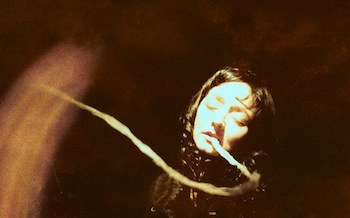 GF: There’s a lot of icky stuff in it: jelly and offal and squids and ectoplasm. Where did all that come from?
GF: There’s a lot of icky stuff in it: jelly and offal and squids and ectoplasm. Where did all that come from?
GM: We had at one point a list of various textures we were going to use in our Internet project, almost as a kind of Kuleshov [montage] experiment. And some movies would be more dry or scratchy, and others gloopier. So we shot all these different textures, as represented by plots, but when it came down to the edit…
EJ: They represent the shame we felt in making the movie. Our self-indulgence in making everything leaves a kind of stain on it. I think we just wanted artefacts of that to appear in it.
GF: When Séances goes online next year, do you hope it will enrich the film and vice-versa?
GM: Yes, that’s the idea. The films will be re-fragmented and re-combined, also with fragments of many other films that aren’t in The Forbidden Room. When little fragments viewers are familiar with from The Forbidden Room pop up, they will be completely re-contextualised, and there will be alternate plot versions supplied by intertitles so that characters' relationships to each other, their professions, and their motives will change. Trajectories of stories will be changed, the score will be changed, the colour timing will be changed. It’s a Kuleshov experiment with an infinite number of variables. I’m hoping it will enrich the way people watch movies – or at least our movies.



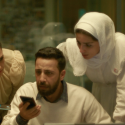











Add comment